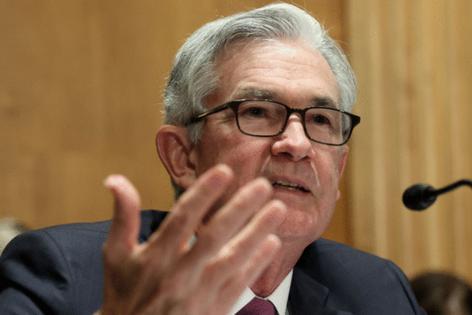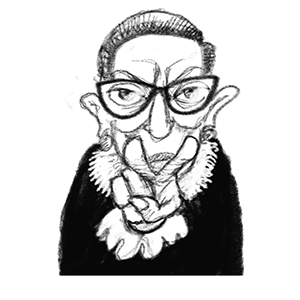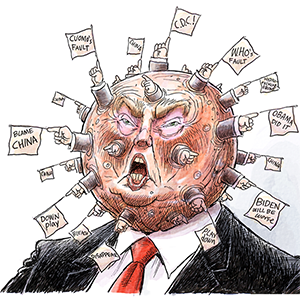S&P 500 falls 5% as Powell signals tariff damage: Markets wrap
Published in News & Features
A selloff in stocks deepened, bonds surged and oil hit a four-year low as Federal Reserve Chair Jerome Powell signaled the damage of a trade war will be bigger than anticipated, with the potential effects including higher inflation and slower growth.
Despite the economic risks from President Donald Trump’s trade war that just included China’s retaliation, Powell reiterated a wait-and-see approach on rates. The S&P 500 was on pace for its worst two-day rout since March 2020, down 5% Friday. The Nasdaq 100 was set for a bear market. Treasury 10-year yields sank 10 basis points to 3.93%. Money markets fully priced in four Fed reductions this year and the chance of a fifth. The dollar rose over 1%.
“While investors are hoping that the Federal Reserve comes to the rescue, it’s unclear how a few potential rate cuts this year will undo the economic damage that these tariffs are likely to cause,” said Emily Bowersock Hill at Bowersock Capital Partners.
Not even a relatively solid reading on U.S. jobs was able to boost sentiment on Friday. As the global economy is set to get hit by widespread tariffs, China retaliated against new U.S. levies with a slew of measures, including duties on all American imports and export controls on rare earths. Trump said his economic policies “will never change.”
Later, the president noted he had a “very productive call” with Vietnam, sending shares of companies that have large manufacturing operations in the country, including Nike Inc. and Lululemon Athletica Inc., soaring.
Big techs including Nvidia Corp., Tesla Inc. and Apple Inc. slumped. U.S.-listed Chinese stocks like Alibaba Group Holding Ltd. and Baidu Inc. also tumbled. A gauge of big banks hit the lowest since Aug. 7, with Morgan Stanley, Goldman Sachs Group Inc. and Citigroup Inc. down more than 6%.
The fastest U.S. stock market selloff since the depths of the COVID-19 pandemic has left valuations looking cheap. But if a recession is inevitable due to the global trade war, the definition of inexpensive becomes relative.
Historically, the S&P 500’s trailing price-to-earnings ratio slides to an average of 15.6 during routs that precede economic downturns, according to data compiled by Sam Stovall, chief investment strategist at research firm CFRA. It’s currently at 23 despite the recent selloff, meaning there’s still plenty of room for share prices to fall.
Several forecasters are turning ice cold on U.S. equities, telling investors to refrain from buying the selloff as a historic trade war raises the specter of a recession.
Bank of America Corp.’s Michael Hartnett told investors to “short” risk assets until Trump pivots away from tariffs and toward tax cuts, higher energy supply, deregulation and an aggressive increase in the debt ceiling. UBS Global Wealth Management’s Mark Haefele cut his rating on U.S. stocks to neutral.
“The correction can be slightly more, given uncertainty,” Nouriel Roubini said at a gathering of economists and business leaders on the banks of Lake Como in Cernobbio, Italy. “Even if in the next few weeks it looks like we’re going to start negotiations, and you get a de-escalation, I think the market corrects a little bit more, bottoms out.”
A few others are finding opportunities now. Ed Yardeni of eponymous firm Yardeni Research said it was time to buy the dip after the gauge’s worst day since the COVID-19 pandemic.
Individual investors were plowing cash into their favorite stocks and exchange-traded funds on Friday, betting that a market selloff triggered by Trump’s trade war would present a buying opportunity in the long run.
The group snapped up shares of Nvidia Corp. and Amazon.com Inc. amid a two-day slide that’s wiped out more than $500 billion between the two companies, according to data tracking the users of Fidelity Investments’ brokerage. They also added to market-tracking ETFs like the Vanguard S&P 500 ETF and the SPDR S&P 500 ETF Trust in another contrarian bet.
Wall Street has been befuddled by Trump’s vision of bringing manufacturing operations back to the U.S., something that would be extremely costly and take years if not decades to accomplish.
Economists generally expect that tariffs will lift inflation and slow growth, keeping the Fed in wait-and-see mode. But the debate over the path of interest rates has ramped up after the tariff announcement. While Morgan Stanley now expects no cuts this year, down from one previously, citing inflation risks, UBS Global Wealth Management see more easing.
Markets have priced in a roughly 50% probability of a quarter-point rate reduction at the next Fed meeting in May. Some traders are even betting on an emergency rate cut before the May 6-7 meeting, with open interest in the April fed funds futures soaring.
Some of the main moves in markets:
Stocks
—The S&P 500 fell 5.2% as of 1:21 p.m. New York time
—The Nasdaq 100 fell 5.3%
—The Dow Jones Industrial Average fell 4.6%
—The MSCI World Index fell 5.5%
—Bloomberg Magnificent 7 Total Return Index fell 4.9%
—The Russell 2000 Index fell 5.6%
Currencies
—The Bloomberg Dollar Spot Index rose 1.1%
—The euro fell 1% to $1.0937
—The British pound fell 1.8% to $1.2870
—The Japanese yen fell 0.5% to 146.77 per dollar
Cryptocurrencies
—Bitcoin rose 1.2% to $83,295.03
—Ether was little changed at $1,796.7
Bonds
—The yield on 10-year Treasuries declined 10 basis points to 3.93%
—Germany’s 10-year yield declined seven basis points to 2.58%
—Britain’s 10-year yield declined seven basis points to 4.45%
Commodities
—West Texas Intermediate crude fell 7.8% to $61.70 a barrel
—Spot gold fell 3% to $3,023.32 an ounce
©2025 Bloomberg L.P. Visit bloomberg.com. Distributed by Tribune Content Agency, LLC.







Comments